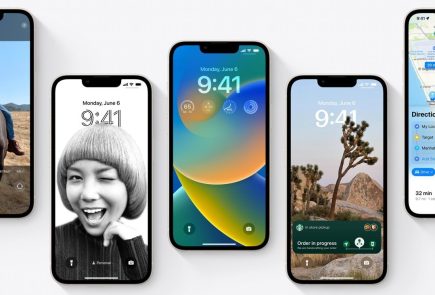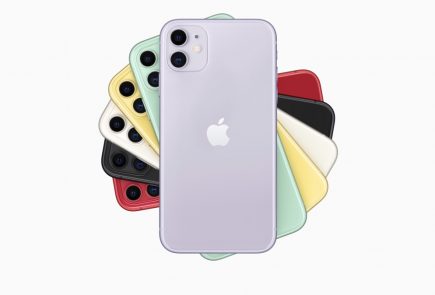Scratches and Blemishes Behind iPhone 5 Supply Issues

Apple’s iPhone 5 supply shortfall is being exacerbated by a quality-control crackdown at Foxconn Technology Group that’s designed to cut the number of devices shipped with nicks and scratches, according to a source familiar with the matter.
The scrapes, which sparked complaints with the iPhone’s debut last month, are due to Apple’s decision to use a type of aluminum that helps make the smartphone thinner and lighter. Senior Apple managers told executives at Foxconn near the end of September to tighten production standards, said the source, who asked not to be named because the matter was private.
Stricter benchmarks have hampered production of the iPhone 5’s anodized aluminum housings, forcing Foxconn’s Hon Hai Precision Industry to idle factories, the source said. The slowdown is heightening supply concerns that have cost Apple about $US60 billion in market value since the iPhone debut – a shortcoming of the drive to imbue products with qualities that make them alluring yet more difficult to manufacture.
The iPhone 5’s sleek design and aluminium body are causing production issues at Apple’s factory.
“The iPhone 5 is not easy to put together because it’s a minimalist design,” said Shaw Wu, an analyst at Sterne, Agee & Leach Inc. “Apple has a very high standard, where it aims to produce each model to be an exact replica where variance is measured in microns.”
While Apple sold a record 5 million iPhone 5s the first weekend the device was on sale, the tally would have been higher if not for supply constraints, the company said. Apple shares have declined 8.7 per cent since a record close on September 19, two days before the new iPhone went on sale.
Easily scratched
Analysts at RBC Capital Markets have cut their forecast for iPhone 5 sales for the December quarter, partly due to a dearth of components. The analysts project sales of 49 million units, compared with 57 million before.
Apple, based in Cupertino, California, designs its products in the US and relies on Foxconn and other contract manufacturers to make them.
Steve Dowling, a spokesman for Apple, declined to comment. Louis Woo, a spokesman for Foxconn Technology Group, whose units include Hon Hai Precision Industry, assembler of the device, and Foxconn Technology Co., a maker of the aluminum housings, denied that any factories were idled and declined to comment on the companies’ customers.
Every step in the iPhone 5 production process, from the manufacturing of the aluminum housing to final assembly, offers opportunities to scratch the soft metal exterior, making it difficult to produce enough of the devices that can meet the new standards, according to workers interviewed by Bloomberg.
‘Normal’ chipping
Professional reviewers had mostly positive responses to the iPhone 5, though a few had faulted its mapping application. Some consumers swiftly drew attention to scratches on the phone even before it was unpacked.
“As soon as I opened the box, I noticed nicks and scuffs in the bezel,” Matthew Pendergraff, wrote on a discussion board on Apple’s website on September 21, when iPhone 5 went on sale. “I realise that at some point this might happen from normal wear and tear, but right out of the box is unaccepted.”
An unofficial response from Apple came four days later, in the form of an e-mail from a senior executive to another customer who complained, according to Apple-focused website 9to5Mac.com.
“Any aluminum product may scratch or chip with use, exposing its natural silver color,” Phil Schiller, Apple’s senior vice president for global marketing, wrote in the note, posted by 9to5Mac.com. “That is normal.”
Metal finish
Within days, Apple executives were expressing their displeasure to Foxconn, according to the source familiar with communications between the two companies.
The clash between quality and quantity in iPhone 5 output is felt acutely at Foxconn Technology Co., a smaller unit of Terry Gou’s manufacturing empire and the major producer of the housings made out of what Apple calls “anodised 6000 series aluminum,” the same material used in its notebooks.
Anodising involves dipping the aluminum into a bath of chemicals and running an electric current through it, which helps to protect the metal against corrosion and makes it easier to adhere color. Scratches on the iPhone 5 are more noticeable because of the contrast between the outer color and underlying metal. The glass casing of the iPhone 4 and iPhone 4S made it less prone to scratches, though it was susceptible to cracks.
“It’s a trade-off because aluminum is strong and tougher to break, and it’s light and more economical, yet it is also easier to scratch,” said Jacob Huang, a professor of materials engineering at National Sun Yat-Sen University in Kaohsiung, Taiwan. “You could use magnesium, which is lighter, but even softer and easier to scratch, or glass which is heavier but harder yet more brittle.”
Tighter standards
As Foxconn Technology Co. tightened quality standards, fewer metal housings passed muster. That’s meant a shortage of parts in the warehouses of Hon Hai, which assembles the device and had to halt production for a day at one of its factories in Shenzhen on October 6, according to the source with knowledge of the situation.
C.K. Liu, a spokesman for Taipei-listed Foxconn Technology Co., said production continues and is increasing at its factories. He declined to comment on specific customers.
For those working on assembly lines with enough anodised aluminum housings for production, the pressure has intensified, because the iPhone 5 is more delicate and easier to scratch during the assembly process, said five factory workers interviewed by Bloomberg News outside the Zhengzhou plant. They spoke on condition that their full names not be used.
Factory dispute
The employees said high demand for the phone, along with the difficulty of avoiding mistakes, has put them under greater pressure now than when they worked on earlier versions, such as the glass-encased iPhone 4.
The pressure and stricter guidelines enforced by quality assurance personnel fueled a dispute at the Zhengzhou factory between employees, according to workers at the site who were interviewed by Bloomberg News. China Labor Watch highlighted the incident in a press release, saying as many as 4000 walked off the job in protest.
Foxconn denied on October 6 that the incident occurred and said there was no strike and no production was halted.
The production hurdles, including labor and materials supply, add to challenges facing Apple chief executive officer Tim Cook as he seeks to keep up with customer demand. The handset is Apple’s top-selling product, accounting for about two-thirds of its profits.
Operation challenges
Apple’s supply chain has largely been developed by Cook, who earned the trust of co-founder Steve Jobs by managing the hundreds of suppliers who provide the components needed to manufacturer the company’s iPhone, iPad, iPod and Mac lines.
With Cook taking over as CEO, responsibility falls to Jeff Williams, Apple’s senior vice president for operations. A former IBM engineer, Williams joined Apple in 1998, around the same time as Cook, and is the executive in charge of ensuring suppliers meet Apple’s quality standards.
While the stricter requirements and assembly disruptions affect output, Foxconn and Apple are well-experienced in dealing with such challenges, said Jeff Pu, a Taipei-based analyst at Fubon Financial Holding Co.
“These stricter standards would lower the yield on good products being shipped out,” Pu said. “They’ll handle it by increasing labor and machinery, and Apple may even use its cash to buy new equipment to assist Foxconn.”
[Sydney Morning Herald]

























